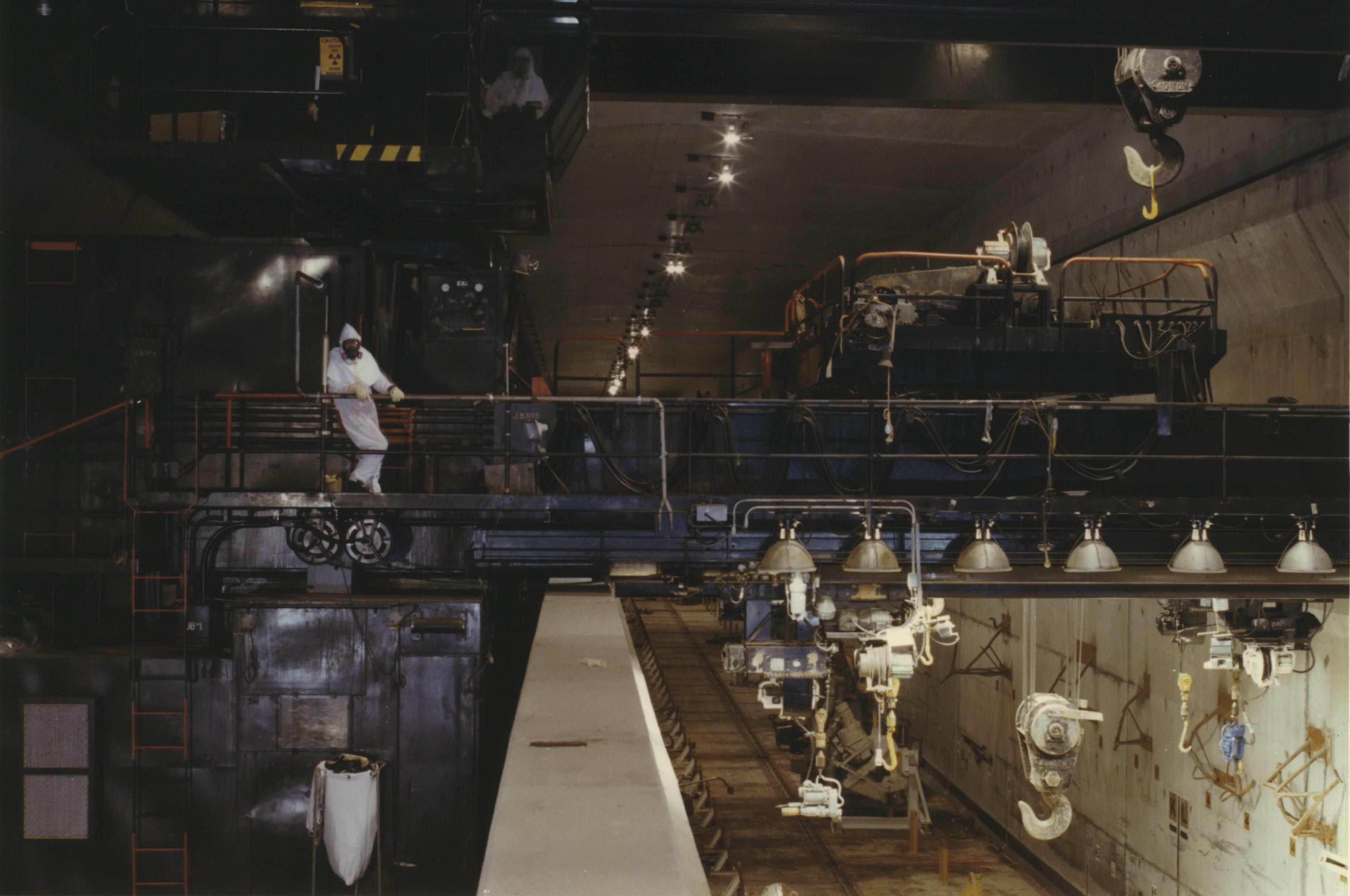As workers fill collapsed tunnel at Hanford site, Inslee launches action against federal government
Workers rushed to fill the hole of a collapsed waste-storage tunnel Wednesday at the Hanford Nuclear Reservation, as emergency response efforts continued at the sprawling compound near Richland.
Discovery of the collapse Tuesday morning prompted Hanford to evacuate all nonessential workers. Personnel worked through the night to build a gravel road to the site, and by Wednesday morning had begun the work of filling the 400-square-foot hole.
Approximately 50 truckloads of soil will be used to plug it, according to Hanford Emergency Information.
The area of the collapse is one of two rail car tunnels constructed in the 1950s and 1960s near the site’s PUREX Plant. The tunnels were built with wood and concrete, with a soil covering about 8 feet deep.
The tunnel stores rail cars containing contaminated equipment and radioactive material. Radiation levels within the tunnel are thought to be lethal, although no leaks have been reported.
The incident is just the latest development to raise concerns at the Hanford site, which made plutonium for nuclear bombs during the Cold War arms race that followed WWII. Last fall, Washington Attorney General Bob Ferguson filed a lawsuit against the Energy Department, contending vapors released from underground nuclear waste tanks posed a serious risk to workers.
Meanwhile, the state of Washington announced it has issued an enforcement action against the federal government in response to Tuesday’s incident.
Gov. Jay Inslee said Wednesday morning that the situation at Hanford had “largely stabilized,” but the state Department of Ecology was obligated to take action against the U.S. Department of Energy.
The federal government was “very cooperative” in communicating with the state Tuesday about the collapse, he said, but the state has the obligation to act as the regulator of safety on the reservation.
Shortly after 5 p.m., the Department of Ecology issued a statement saying that the enforcement action had been issued to the head of the Energy Department in Richland and the president of the private contractor working on Hanford cleanup.
That administrative order lists five possible violations of the permit issued for Hanford recovery, and accuses the federal agency and its contractor of not maintaining and operating the tunnel to avoid the release of hazardous substances that threaten human health and the environment.
It calls for the department and its contractor to determine the cause of the breach, assess future risks to the two tunnels and provide an evaluation by July 1. It also calls for a draft plan for corrective actions by Aug. 1, and a draft plan by Oct. 1 to update the permit covering the cleanup and eventual closure of the tunnels.
Inslee said the enforcement action could help the Department of Energy make the argument to Congress that it needs money to get the job done, even in the face of possible budget cuts.
“It really is important for the state of Washington to say ‘We will take a strong stand. We will not be forgotten. And the regulatory system will be honored,’ ” he said. “We don’t want to see Hanford and the safety of our employees be victimized by budget cuts.”
Speaking to reporters in Olympia, Inslee said the state Department of Ecology is expected to file the action by Thursday.
